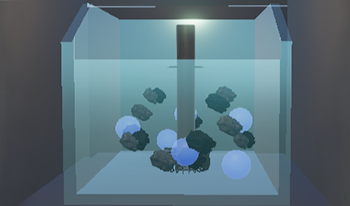
Virtual reality (VR) has increasingly become a popular tool in education and is often compared with traditional teaching methods for its potential to improve learning experiences. However, VR itself holds a wide range of experiences and immersion levels within, from less interactive environments to fully interactive, immersive systems. This study explores the impact of different levels of immersion and interaction within VR on learning outcomes. The project, titled Eureka, focuses on teaching the froth flotation process in mining by comparing two VR modalities: a low-interaction environment that presents information through text and visuals without user engagement, and an immersive, high-interaction environment where users can actively engage with the content. The purpose of this research is to investigate how these varying degrees of immersion affect user performance, engagement, and learning outcomes. The results of a user study involving 12 participants revealed that the high-interaction modality significantly improved task efficiency, with participants completing tasks faster than those of the low-interaction modality. Both modalities were similarly effective in conveying knowledge, as evidenced by comparable assessment scores. However, qualitative feedback highlighted design considerations, such as diverse user preferences for navigation and instructional methods. These findings suggest that, while interactive immersion can improve efficiency, effective VR educational tools must accommodate diverse learning styles and needs. Future work will focus on scaling participant diversity and refining VR design features.